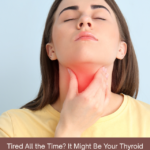Period pain, or dysmenorrhea, is a common experience for many individuals during their menstrual cycle. While occasional discomfort is normal, severe period pain can significantly impact daily life. Understanding the causes and symptoms of period pain can help manage and alleviate this discomfort effectively. In this article, we will explore the underlying causes of period pain, identify common symptoms, and offer insights into managing and treating menstrual cramps.
What is Period Pain?
Period pain, also known as dysmenorrhea, refers to the cramping and discomfort experienced in the lower abdomen before and during menstruation. It is categorised into two types: primary and secondary dysmenorrhea.
- Primary Dysmenorrhea
This type of period pain is not associated with any underlying reproductive health issues. It typically occurs due to the natural process of menstruation. Primary dysmenorrhea is caused by the release of prostaglandins—hormone-like substances that trigger uterine contractions. These contractions help shed the uterine lining, resulting in cramps. - Secondary Dysmenorrhea
Secondary dysmenorrhea is related to underlying reproductive health conditions. It is characterised by more intense and prolonged pain, often starting earlier in the menstrual cycle. Conditions such as endometriosis, fibroids, or pelvic inflammatory disease can contribute to secondary dysmenorrhea.
Common Causes of Period Pain
Understanding the causes of period pain can help in managing and treating the condition effectively. Here are some common causes:
- Hormonal Imbalance
Prostaglandins, which are released during menstruation, play a significant role in causing uterine contractions. Higher levels of prostaglandins can lead to more intense cramps. Hormonal imbalances, such as excess oestrogen or low progesterone, can contribute to increased prostaglandin production. - Endometriosis
Endometriosis is a condition where the tissue similar to the uterine lining grows outside the uterus. This tissue responds to hormonal changes during the menstrual cycle, causing pain and inflammation. Endometriosis often leads to severe period pain and can also cause pain during intercourse and bowel movements. - Uterine Fibroids
Uterine fibroids are non-cancerous growths in the uterus that can cause heavy bleeding and intense cramping. The presence of fibroids can lead to painful menstruation and other symptoms such as pelvic pressure and bloating. - Pelvic Inflammatory Disease (PID)
PID is an infection of the reproductive organs, often caused by sexually transmitted infections. It can result in chronic pelvic pain and menstrual cramps due to inflammation and scarring of the reproductive organs. - Adenomyosis
Adenomyosis occurs when the endometrial tissue grows into the muscular wall of the uterus. This condition can lead to painful and heavy periods, as well as increased uterine tenderness.
Common Symptoms of Period Pain
Period pain can vary in intensity and duration. Common symptoms include:
➱ Cramping
Cramping is the most prevalent symptom, characterized by a dull or sharp ache in the lower abdomen. It often begins a day or two before menstruation and can last for a few days.
➱ Lower Back Pain
Pain in the lower back is another common symptom, often accompanying abdominal cramps. The discomfort can extend to the lower back and thighs.
➱ Nausea and Vomiting
Some individuals may experience nausea or vomiting along with period pain, particularly if the cramps are severe.
➱ Headaches
Hormonal fluctuations during menstruation can lead to headaches or migraines in some individuals.
➱ Fatigue
Period pain can cause fatigue and a general feeling of weakness, making it challenging to carry out daily activities.
Managing Period Pain
There are various ways to manage period pain, depending on its severity and underlying causes:
➤ Over-the-Counter Pain Relievers
Nonsteroidal anti-inflammatory drugs (NSAIDs) like ibuprofen and naproxen can help reduce inflammation and alleviate cramps.
➤ Heat Therapy
Applying a heating pad or warm compress to the lower abdomen can help relax the uterine muscles and reduce cramping.
➤ Exercise
Regular physical activity, such as walking or yoga, can improve blood flow and reduce the severity of menstrual cramps.
➤ Dietary Adjustments
A balanced diet rich in fruits, vegetables, and whole grains can help manage period pain. Reducing caffeine, salt, and sugar intake may also be beneficial.
➤ Consult a Healthcare Provider
For severe or persistent period pain, it is essential to consult a healthcare provider. They can help diagnose any underlying conditions and recommend appropriate treatments or medications.
Conclusion
Understanding period pain and its causes can significantly enhance your ability to manage and alleviate menstrual discomfort. By identifying symptoms early and employing effective management strategies, you can improve your quality of life during your menstrual cycle.
For expert guidance and personalised treatment options, consult with Dr. Kamla Kaushal at Trinity Hospital Chandigarh. As the best female specialist in Chandigarh, Dr. Kaushal offers comprehensive care tailored to your specific needs, helping you navigate and manage period pain effectively. Don’t let menstrual discomfort hinder your daily life—reach out to Dr. Kaushal for professional support and relief.To get more information please contact us on : +918288093620












